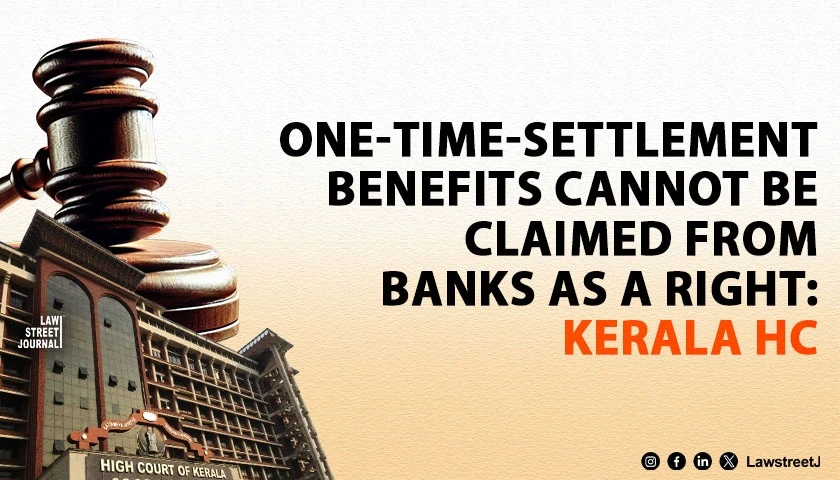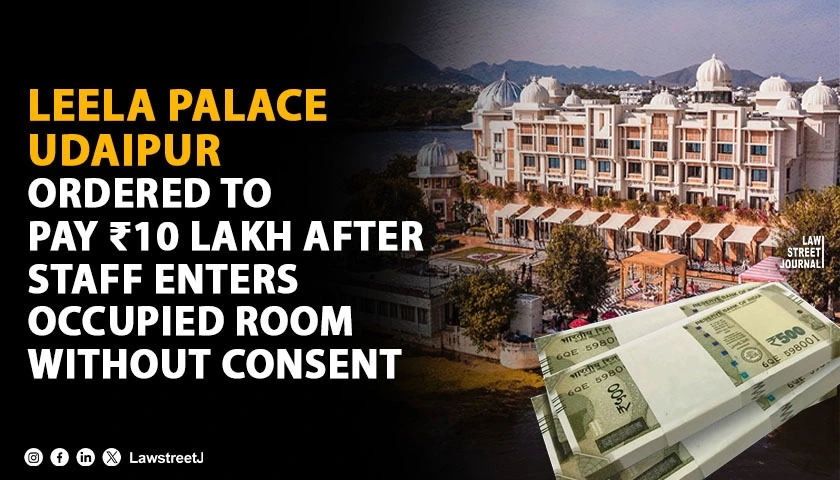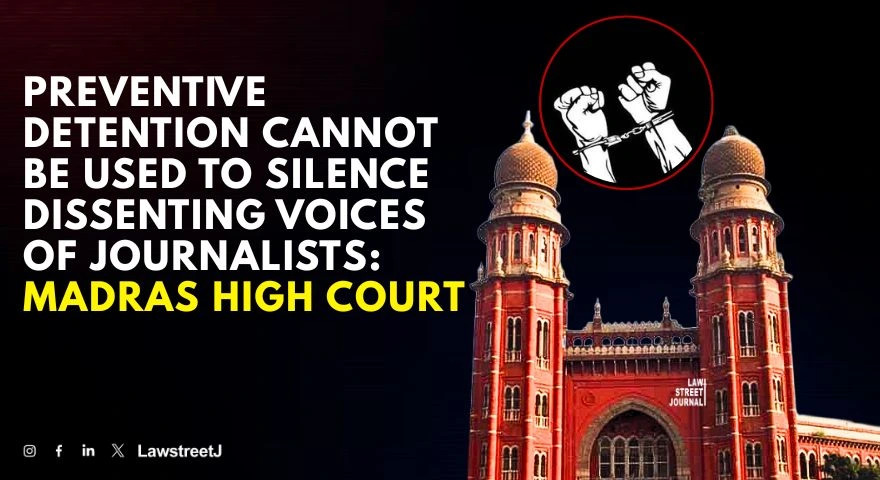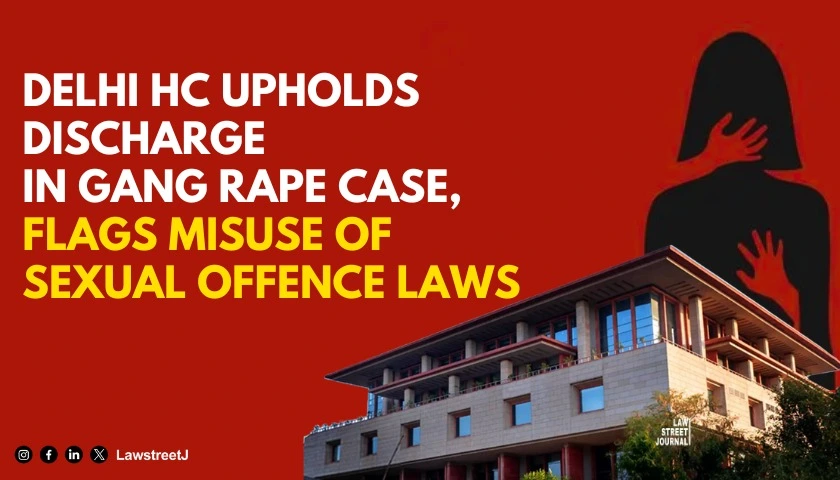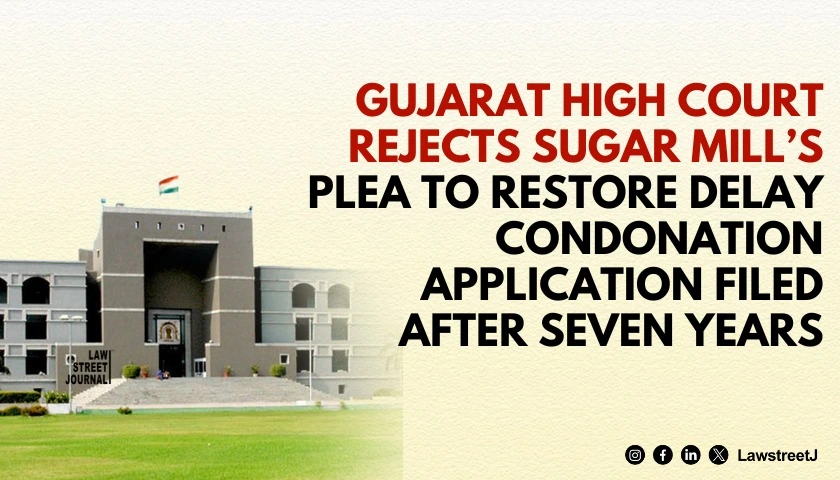In his most recent opinion, Justice S.J. Kathawalla addressed a challenge to intellectual property rights, reiterating the rights of a Plaintiff in long-standing marks over any right created by registration. The plaintiff brought suit against the defendants, alleging infringement of its registered trade marks, copyright infringement, and passing off. The court stated that the moot question in this case is whether the Defendants' use of the trade mark and/or trade name containing 'RPG' as its only leading, essential, and prominent feature in respect of their services is likely to cause confusion or deception in the minds of the public, causing them to mistake or associate the same with the plaintiff or the plaintiff's RPG trade marks.
The plaintiff claims that in 1979, it established the distinctive and unique trade mark RPG, which is an acronym formed from the initials of its founder, Mr. Rama Prasad Goenka, a well-known industrialist. The plaintiff and its group companies have used several stylized / formative trade marks using the mark RPG in connection with their various products and services over the years. The plaintiff claims that it has been using the RPG Marks in respect of its products and services continuously, extensively, and uninterruptedly in the sense of a trade mark, trade name, and trading style, and that the mark RPG has thus become a source identifier of the plaintiff and its goods / services thereunder. Under the Trade Marks Act of 1999, the Plaintiff applied for and received registration of many RPG / RPG formative marks in various classes. In addition, the Plaintiff has obtained copyright registration for the artistic work in its RPG Logo. The plaintiff claims to be the owner of a number of websites that use the RPG trademark as part of their domain names. The Plaintiff is also active on popular social media platforms such as Facebook, YouTube, Twitter, and LinkedIn, and its Facebook and Twitter pages have a sizable following. The plaintiff claims to have made significant sales of products and services bearing the RPG marks.
Plaintiff contends that the Defendants' marks, namely RPG Opticals and RPG Pharmacy, are aesthetically, architecturally, and phonetically identical to, and/or deceptively similar to, the plaintiff's earlier RPG Marks in every way. Plaintiff also claimed that the Defendants' adoption and/or use of the contested marks is likely to cause confusion and deception among consumers and/or members of the relevant trade. Such consumers are likely to be mislead into believing that the Defendants' services come from the plaintiff, when they don't, and/or that the Defendants' services are endorsed, licenced by, related with, and/or connected with the plaintiff, when none exist. Because the plaintiff maintains various active websites under domain names incorporating its prior and famous trade mark RPG, such as www.rpggroup.com, www.rpg.in, www.rpglifesciences.com, www.kecrpg.com, www.rpgcables.com, and www.raychemrpg.com, the Defendants' use of RPG as part of the impugned domain names (www.rpgpharmacy).
Defendants countered that their marks are distinct from the RPG Marks used by the plaintiff. The Plaintiff's marks are 'word marks' and 'logo marks,' whereas the Defendants' impugned marks are a combination of the terms 'RPG' + "Opticals"/"Pharmacy." The taglines "PERFECT LOOK PERFECT VISION" and "YOUR HEALTH IS OUR WORLD" are likewise included in the impugned marks of Defendants No. 1 and 2. The defendants claim that they are using the infringed marks in connection with services (i.e., 'RPG Opticals' in connection with services falling under class 35, namely, advertisement, wholesale, retail of Optical lenses, sunglass, eyewear, eyeglasses, contact lenses, ophthalmology, spectacles and other optical products, and 'RPG Pharmacy' in connection with services falling under class 44, namely, pharmacy services, pharmacy advice, pharmacy dispensary. The plaintiff, on the other hand, is a manufacturer of items under the RPG Marks. The defendants have filed their applications in classes 35 and 44, respectively, whereas the plaintiff is not registered in the service category. The defendants are simply utilising their trademarks RPG Opticals and RPG Pharmacy as a trade name and are not selling any items under the RPG mark. The defendants' use of the term RPG is limited to the trading name, so the plaintiff must establish infringement, if any, under Section 29(5) of the Trade Marks Act, 1999.
Defendant cited the Supreme Court case Nandhini Deluxe vs. Karnataka Co-operative Milk Producers Federation Ltd., 2018(9) SCC 183, in which it was held that a trade mark proprietor cannot enjoy monopoly over an entire class of goods if he is not using the same trade mark for certain goods in the same class. Plaintiff cited Ruston and Hornsby Ltd. vs. Zamindara Engineering Co, (1969) 2 SCC 727; Pidilite Industries Limited vs. Jubilant Agri & Consumer Products Limited, 2014 (57) PTC 617 (Bom. ); and Kantilal Premji Maru vs. Madan Kumar, 2018 (75) PTC 81 (Bom.) to argue that when comparing two rival marks, the prominent and distinctive. Plaintiff argued that it is not a legal requirement that the plaintiff's trade mark be registered in the list of well-known trade marks before filing a complaint under Section 29(4) of the Act, and that only then can the plaintiff seek protection under Section 29(4). (4). He argued that Section 29(4) of the Act does not utilise the term "well-known" trade mark and instead uses the term "reputation," citing the definition of "well-known" trade mark in Section 2(zg) and provisions in Sections 11(6), 11(7), and 29(4) of the Act. Given the significant proof of usage and promotion material provided by the plaintiff in the current proceedings, he contends that this Court has the authority to assess the well-known status of the plaintiff's trade mark RPG even at this early stage.
The court noted that,
"It is clear that RPG trade mark is used by the Plaintiff in different forms - trademark, part of corporate/trade name, domain name. Further, RPG is the house mark of the plaintiff and is used by its group companies in respect of their business/ goods and/or services. Further, the plaintiff has business interest in diverse sectors of the economy and has extensive and diverse business operations under the RPG Marks, as has been shown in the plaint and supported by extensive evidence. It is thus prima facie established that the plaintiff's RPG marks have acquired the status of a well known trade mark and the plaintiff has immense reputation and goodwill in the said trademarks/names and the products offered thereunder. Considering the factors such as (0) the extent of knowledge of the RPG mark, and its recognition by the relevant public; (ii) the duration of the use of the RPG marks; (iii) the extent of the products in relation to which the RPG mark is being used; (iv) the extent and duration of advertising and promotion of the RPG mark; (v) the geographical extent of the trading area in which the RPG mark is used; (vi) the state of registrations of the RPG mark; (vii) the volume of business under the RPG marks, and (viii) successful enforcement against infringers/offenders before the Courts of law/registry, I am of the opinion that prima facie, the plaintiff's RPG mark deserves protection as a well-known trade mark as the same has come to acquire a secondary meaning to connote to the public the goods and / or services emanating from the Plaintiff."
The court stated that, "The principles in relation to the law of 'deceptive similarity' of trade marks are well settled by the Supreme Court and catena of judgments of various High Courts. Some of these principles can be summarized as follows: (i) Both at the stage of interim and final relief, the matter rests on first impression itself; (ii) Trade marks are remembered rather by general impressions or by some significant detail than by any photographic recollection of the whole; (iii) It is important to find out what is the distinguishing or essential feature of the plaintiff's trade mark and what is the main feature or the main idea underlying that trade mark, and ascertain it the Defendants' trade mark contains the same distinctive or essential feature, or conveys the same idea; (iv) In deciding the question of similarity between the two marks, the approach must be from the point of view of a man of average intelligence and imperfect recollection; (v) Marks must be compared as a whole; (vi) The true test is whether the totality of the Defendants' trade mark is such that it is likely to cause deception or confusion or mistake in the minds of persons accustomed to the existing trade mark; (vii) While ascertaining the question of deceptive similarity, the Courts must not conduct a microscopic examination and both the visual and the phonetic tests must be applied; (viii) The nature of the commodity, the class of purchasers, the mode of purchase and other surrounding circumstances must also be considered."
The defendants' trade marks/labels/names are similar to the plaintiff's registered trade marks, according to the court. Furthermore, applying the test, the only answer is that a customer familiar with the plaintiff and its trade mark/name RPG, seeing the name/mark of the Defendants and seeing it described as Pharm, will look upon or react to the marks of the Defendants and what association he will form by looking at them and in what respect he will connect the marks to the services he was availing.
According to the court, Defendant No.2 is also the registered proprietor of the RPG Pharmacy trade mark in Class 44, which the Plaintiff has filed a Rectification Application against. The application for Rectification is currently pending. Because Defendant No.2 has also registered its trade mark label RPG Pharmacy, the Defendant No.2's use of that trade mark label in connection with her pharmacy services would not constitute infringement of Plaintiff's registered trade marks under Section 28(3) read with Section 30(2) (e) of the Trade Marks Act, 1999.
Regardless, the court made a point to mention that "Even though the aforesaid requirements are apparent, this does not preclude the Court from issuing an interim injunction in the case of infringement against another registered proprietor. According to the dicta of our Court's Full Bench in the case of Lupin Ltd. (supra), a challenge to the validity of a trade mark's registration can ultimately succeed only in rectification proceedings, but there is no express or implied bar taking away the Civil Court's jurisdiction and power to consider the challenge to the validity of the trade mark at the interlocutory stage by way of prima facie finding."
The court took note of the following judgments:
In 1994 (14) PTC 287 (Del), Daimler Benz Aktiegesellschaft and Others vs. Hybo Hindustan 7. "I see no reason why any trader in India should use the term "Benz," which is associated with one of the world's finest engineered cars, and use it for ordinary commodities, in this case undergarments, particularly underwears, as indicated above."
"Kamal Trading Co., Bombay and Ors. vs. Gillette U. K. Limited reported in 1988 (8) PTC 1 (BOM) 2. The plaintiffs are a Company incorporated under the laws of the United Kingdom and are a subsidiary of the Gillette Company, U.S.A. The Gillette Company and its subsidiaries have been carrying on worldwide business in the manufacture and sale of safety razor blades, safety razors, shaving cream, shaving brushes, etc. since last over several years.... 9. Mr. Tulzapurkar very rightly submitted that the trade mark '7 O'CLOCK had acquired worldwide reputation and any customer purchasing the goods with that mark would immediately connect the goods to the house of Gillets which are the registered owners of the mark '7 O'CLOCK'. It cannot be overlooked that it is not necessary for the plaintiffs to establish that in fact any customer was deceived, it is enough if it is shown that there is likelihood of deception. We have no hesitation in concluding that the user of the mark '7 O'CLOCK' by the defendant would clearly result in deceiving the customer with the impression that the tooth brushes come from the house of Gilletes."
The court noted that the Full Bench of our Court in Cipla Limited Vs. Cipla Industries Private Limited, 2017 (69) PTC 425 (Bom), held
that use of a registered trade mark as corporate name or trading name or style is excluded from the purview of Section 29(1), 29(2) and 29(4) of the Trade Marks Act, 1999. The following observations of the Full Bench are relevant:
Subsection (5) will not apply unless both of the prerequisites are met. The question before us is whether Subsection (4) can be applied where the first criterion of Subsection (5) is met but the second is not. In other words, whether a person dealing with products or services that are dissimilar to those for which the trade mark is registered utilises the registered trade mark as part of their business/corporate name will be subject to the mischief described in Sub-Section 1. (4). The question is answered by the simple wording used in Subsections (4) and (5). "A registered trade mark is infringed by a person who, not being a registered proprietor or a person using by way of permitted use, uses in the course of trade a mark that - (a) is identical with or similar to the registered trade mark, and (b) is used in relation to goods or services that are not similar to those for which the trade mark is registered..." says Subsection (4). When a mark that is identical to or similar to a registered trade mark is used in the course of business in relation to goods or services that are not similar to those for which the trade mark is registered, the clause is triggered. "A registered trade mark is infringed by a person if he uses such registered trade mark as his trade name or part of his trade name, or as the name of his business concern or part of the name, of his business concern," according to Subsection (5). 27 The words "in the course of trade" and "with connection to products or services" are used in Sub-Section (4), which are not found in Sub-Section (3). (5). "........ if he uses such registered trade mark as his trade name or part of his trade name, or as the name of his business concern or part of the name, of his business concern," says Sub-Section (5). In the Sub-Section, these terms are glaringly absent (4). Because of the difference in phraseology and phrasing between the two Subsections, it is evident that Subsection (4) applies in a "trade mark versus mark" situation. When the mark is used in the course of business in respect to products and services, it falls under this category. In the case of a "trade mark vs trade/corporate/business name" scenario, Subsection (5) applies. It is a unique provision that differs from Subsections (1), (2), and (3). (4). As a result, Subsections (4) and (5) apply to many situations arising from the use of a trademark. Subsection (5) is not otiose because of Subsection (4). The fact that "name" is included in the definition of "mark" has no bearing on how Subsections (4) and (5) are interpreted (5). As a result, the requirements for infringement under Section 29(5) are not met in this case, and the Defendant's use of the trading names 'RPG Pharmacy' and 'RPG Opticals' in connection with its services would not amount to infringement of the plaintiff's registered trade mark under Section 29(5) of the Act.
The court stated that in order for a passing off action to succeed, the plaintiff must establish three key elements: a) goodwill and reputation in the plaintiff's mark, b) actual or likelihood of deception and confusion among the public caused by the defendant's use of the impugned trade mark, and c) actual or likelihood of injury to the plaintiff caused by the defendant's use of the impugned trade mark. Lord Oliver reduced the five criteria initially given down by Lord Diplock in Erven Warnink v. Townend & Sons Ltd. (1979) AC 731, 742 (HL) (the "Advocate Case") to the aforementioned three in Reckitt & Colman Products Ltd. v. Borden Inc (1990) 1 ALL E.R. 873 (the "Jif Lemon" case). The plaintiff has built up a goodwill and reputation for its RPG trade marks, which have become well-known not only among consumers and traders, but also among the general public, and have taken on secondary significance. The Plaintiff's use of RPG marks predates the Defendants' by approximately 37 years. The Plaintiff's stated trade mark RPG has acquired secondary significance as a result of its long, continuous, and broad use and marketing, as well as the plaintiff's substantial activity in several areas of the economy under the trade mark/trade name RPG. As a result, any usage of "RPG" by the Defendants will undoubtedly cause the plaintiff's services and company to be associated with the Defendants'. In the pharmaceutical field, the plaintiff has significant business operations under the RPG Marks. Pharmaceuticals and pharmacies are inextricably linked. Thus, it is clear that the defendants' operations under the mark/name RPG Pharmacy intersect with the plaintiff's business interests, and that the business activities are related to the same field, namely the medical industry.
The Division Bench of the Bombay High Court, in Sunder Parmanand Lalwani and Ors. vs. Caltex (India) Ltd. (1968) 70 BOMLR 37, was asked whether there was any possibility of confusion between the opponents' 'Caltex' watches and their 'Caltex' petrol and various other oil products. Despite the fact that the goods were completely different and there was no trade connection between them, there was a likelihood of deception or confusion. "On the facts of this case, we have no hesitation in holding that a large number of people would be led to believe that the watches were in some way connected with the opponents, or at the very least wonder whether they were in any way connected with the opponents if they saw or heard about the mark 'Caltex' in connection with watches," the Court said. People who see the mark on watches, which are a new category of commodities, will believe (or are most likely to assume) that they came from the mark's owner, namely the opponents."
The SC held the following in Mahendra & Mahendra Paper Mills Ltd. vs. Mahindra & Mahindra Ltd, (2002) 2 SCC 147: "Without intending to be exhaustive some of the principles which are accepted as well settled may be stated thus: that whether there is a likelihood of deception or confusion arising is a matter for decision by the court, and no witness is entitled to say whether the mark is likely to deceive or to cause confusion; that all factors which are likely to create or allay deception or confusion must be considered in combination; that broadly speaking, factors creating confusion would be, for example, the nature of the market itself, the class of customers, the extent of the reputation, the trade channels, the existence of any connection in course of trade, and others. 19. We have, in the light of the above pronouncements, no difficulty in holding that the dissimilarity in some of the products in which the parties trade does not make any material difference insofar as the grant or refusal of injunction against the defendants in the facts and circumstances of this case are concerned." As a result, it is obvious that the idea that a shared sphere of activity is not required to succeed in a pass-off is well established. The fact that the plaintiff and defendants have different fields of activity has no bearing on the facts of this case. The Plaintiff will almost surely suffer harm as a result of the Defendants' deception.
In the case of S. Syed Mohideen v. P. Sulochana Bai, 2015 (7) SCALE 136, the Supreme Court held: "23. The foregoing were the conclusions drawn from the provisions emerging from a simple reading of the Act, which clearly indicates that prior user rights are superior to registration rights and are unaffected by registration rights under the Act. Second, there are various reasons why the passing of rights is preferred over the registration of rights. Finally, it is a well-established notion in common law jurisdictions that the passing of a right is a more expansive remedy than infringement. Fourth, it is a well-established legal principle in the realm of trade marks that registration just recognises pre-existing common law rights and does not create any new rights."
In light of the above observations the court, pending the final disposal of the suit restrained the Defendant from manufacturing, marketing, trading, selling and/or using the RPG marks, logo, domain name or trade name, which are identical with or deceptively similar to the Plaintiff's prior, distinctive and reputed trade marks in any manner whatsoever.


